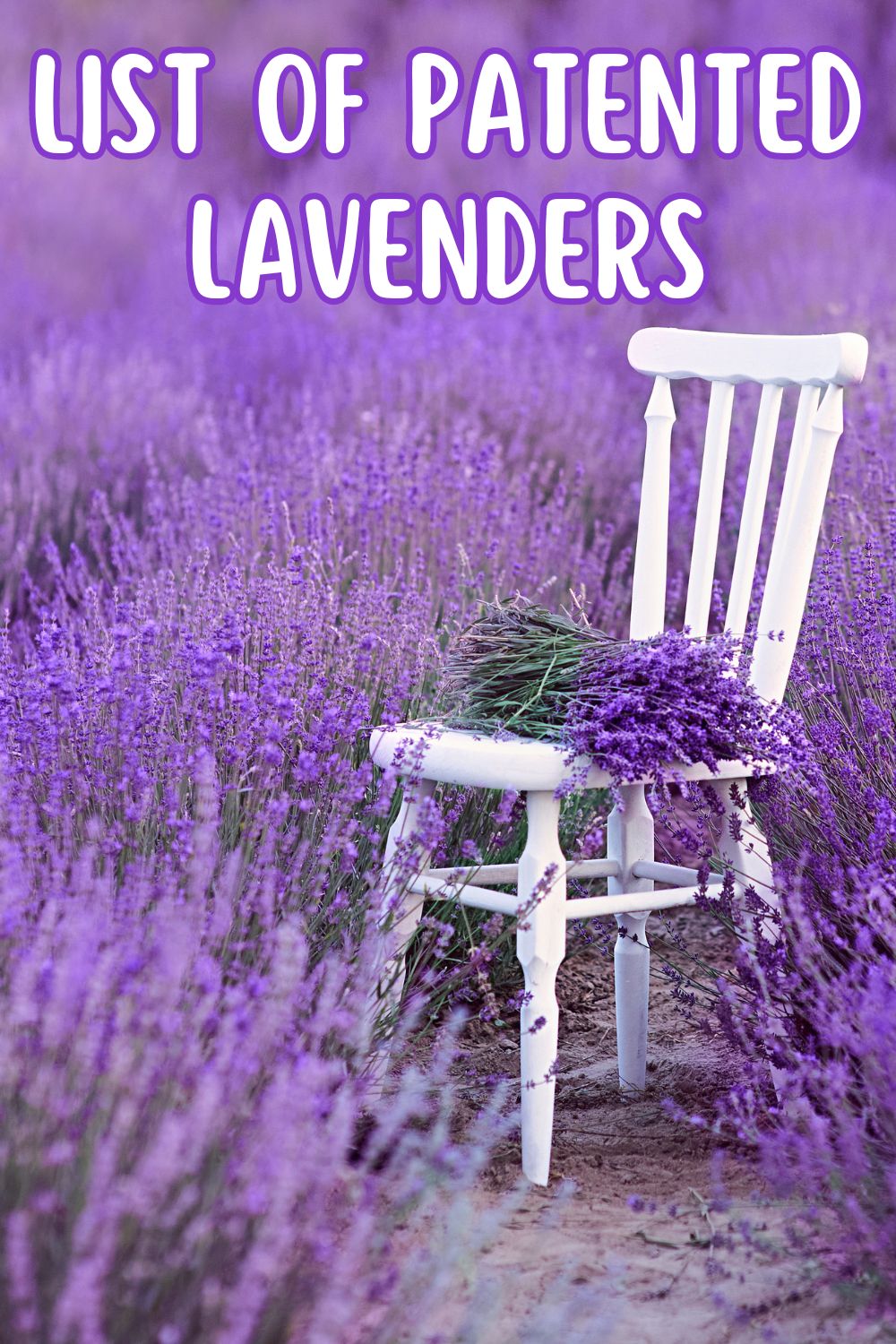Propagating your own lavender plants is a fun, cheap way to produce more lavender, share with friends and neighbors, and even earn a profit from selling the resulting plants. However, not all lavender plants can legally be propagated! Before you begin taking cuttings, make sure that the cultivar has not been patented. The list of patented lavenders below is a good place to start.

What is a plant patent?
Essentially, a patent grants the inventor, or in this case, breeder, protection, and control over the use and sale of their invention.
In the plant world, this means that no one else may propagate and/or sell the patented cultivar without express permission from the patent holder — which includes paying royalties. So, if you want to plant more of a patented type of lavender, you need to purchase more plants from a licensed seller rather than take cuttings or collect seed from the one(s) you already have.
A patent does not last forever, though. After the patent expires, it cannot be renewed, and anyone can then freely propagate and/or sell the formerly patented plant.
How to find out if your lavender is patented
But how do you know if a particular variety of lavender is patented? The easiest way to tell is by looking at the plant tag or the description on the seller’s website.
A patented plant will have a patent number, which looks something like “PP15231” or “PP #15,231.” Alternatively, it may say “PPAF,” which stands for “Plant Patent Applied For.” There may even be a clear statement like “propagation strictly prohibited.”
Alternatively, you can look up the cultivar online to see if it has a patent. Try the common and scientific names, if you know them both, to be thorough.
If you can’t find a patent number through any of these methods, your variety likely isn’t patented, and you can do with it what you wish.
What about trademarks? Plants with trademarked names are not always patented, and patented plants do not always have trademarked names. A trademark simply means that you cannot sell a plant under that name.
List of Patented Lavenders
The following list does not, of course, contain every patented cultivar of lavender. But it will give you a good idea of which cultivars on the market are patented and provide a jumping-off point for learning more about them.
Each cultivar listed includes the common name, scientific name, and patent number. They are grouped by species and listed alphabetically by cultivar name for ease of reference.
English Lavender
- Sweet Romance Lavender – Lavandula angustifolia ‘Kerlavangem’ PP23001
- Blue Cushion Lavender – Lavandula angustifolia ‘Lavandula Schola’ PP9119
- Violet Intrigue Lavender – Lavandula angustifolia ‘Lavang 21’ PP15344
- SuperBlue English Lavender – Lavandula angustifolia ‘SuperBlue’ PP24929
- Thumbelina Leigh English Lavender – Lavandula angustifolia ‘Thumbelina Leigh’ PP15231
Lavandin
- Phenomenal Lavender – Lavandula x intermedia ‘Niko’ PP24193
- Sensational!® Lavender – Lavandula x intermedia ‘Tesseract’ PP31786
Spanish lavender
- Anouk Spanish Lavender – Lavandula stoechas ‘Anouk’ PP16685
- Primavera Spanish Lavender – Lavandula stoechas ‘Anouk Deluxe 1225’ PP33269
- Anouk Twilight Spanish Lavender – Lavandula stoechas ‘Anouk Deluxe 16054’ PP34971
- Anouk Purple Medley Lavender – Lavandula stoechas ‘Anouk Purple Medley’ PPAF
- Silver Anouk Spanish Lavender – Lavandula stoechas ‘Silver Anouk’ PP20068
- With Love™ Lavender – Lavandula stoechas subsp. pendunculata ‘Bentley’ PP22709
- Blueberry Ruffles Spanish Lavender – Lavandula stoechas subsp. pendunculata ‘Blueberry Ruffles’ PP18305
- Ghostly Princess Spanish Lavender – Lavandula stoechas subsp. pendunculata ‘Ghostly Princess’ PP29697
- The Princess™ Spanish Lavender – Lavandula stoechas subsp. pendunculata ‘IBPR901-2’ PP25525
- Javelin Forte™ Deep Purple Spanish Lavender – Lavandula stoechas ‘LABZ0004’ PP27493
- Javelin Forte™ Deep Rose Spanish Lavender – Lavandula stoechas ‘LABZ0006’ PP27399
- Hazel™ Spanish Lavender – Lavandula stoechas ‘Larkman Hazel’ PP20894
- Myrleigh Lavender – Lavandula stoechas ‘Myrleigh’ PP22710
- Winter Bee Spanish Lavender – Lavandula stoechas ‘Winter Bee’ PP20840
How to propagate lavender
How to Grow Lavender for Fun and Profit: Lessons Learned from Planting Three Hundred Lavender Plants
Once you have selected a non-patented cultivar to propagate, how do you propagate it? You will have the highest chance of success growing lavender from cuttings, though you can also save and plant lavender seeds.
To propagate from cuttings, you will want to take either a softwood cutting in late spring or a hardwood cutting in spring or late summer.
- For a softwood cutting, cut a three- to six-inch segment of new growth with clean pruners.
- For a hardwood cutting, cut directly below the third to fifth node from the tip of a healthy, mature stem. Strip off all leaves except for the top node or two.
Dip the bottom of the cuttings in rooting hormone, if desired, and poke them into a pot of well-draining potting mix. Place the pot in a warm, humid location with bright, indirect light, and keep the soil moist.
I hope you enjoy propagating your “open source” lavender and perhaps exploring some of the unique patented cultivars available!



